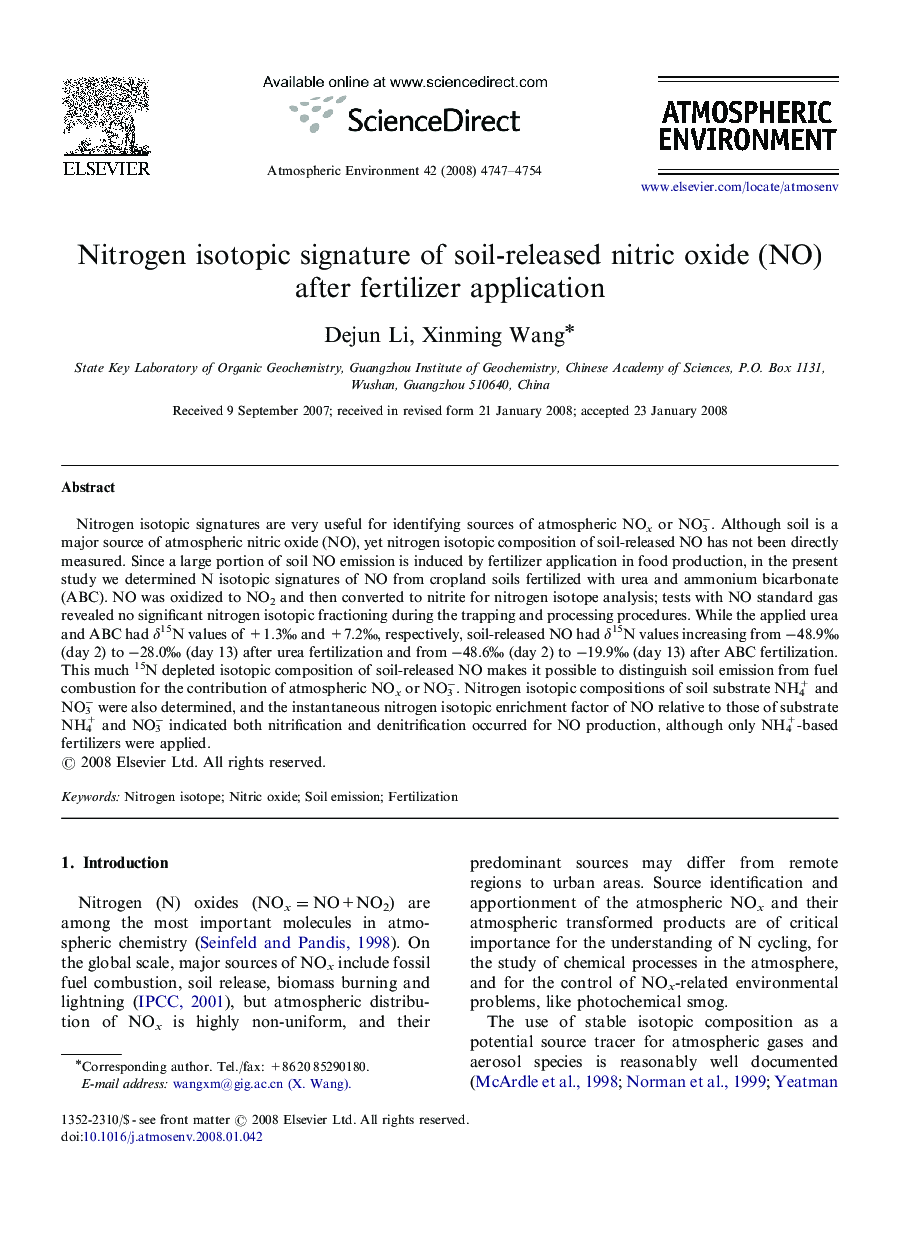| Article ID | Journal | Published Year | Pages | File Type |
|---|---|---|---|---|
| 4442431 | Atmospheric Environment | 2008 | 8 Pages |
Nitrogen isotopic signatures are very useful for identifying sources of atmospheric NOx or NO3−. Although soil is a major source of atmospheric nitric oxide (NO), yet nitrogen isotopic composition of soil-released NO has not been directly measured. Since a large portion of soil NO emission is induced by fertilizer application in food production, in the present study we determined N isotopic signatures of NO from cropland soils fertilized with urea and ammonium bicarbonate (ABC). NO was oxidized to NO2 and then converted to nitrite for nitrogen isotope analysis; tests with NO standard gas revealed no significant nitrogen isotopic fractioning during the trapping and processing procedures. While the applied urea and ABC had δ15N values of +1.3‰ and +7.2‰, respectively, soil-released NO had δ15N values increasing from −48.9‰ (day 2) to −28.0‰ (day 13) after urea fertilization and from −48.6‰ (day 2) to −19.9‰ (day 13) after ABC fertilization. This much 15N depleted isotopic composition of soil-released NO makes it possible to distinguish soil emission from fuel combustion for the contribution of atmospheric NOx or NO3−. Nitrogen isotopic compositions of soil substrate NH4+ and NO3− were also determined, and the instantaneous nitrogen isotopic enrichment factor of NO relative to those of substrate NH4+ and NO3− indicated both nitrification and denitrification occurred for NO production, although only NH4+-based fertilizers were applied.
